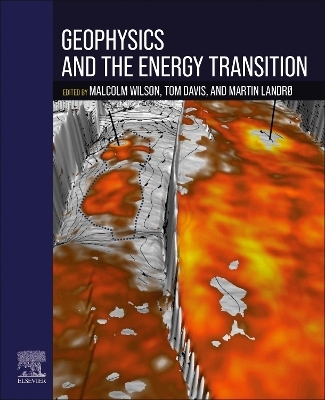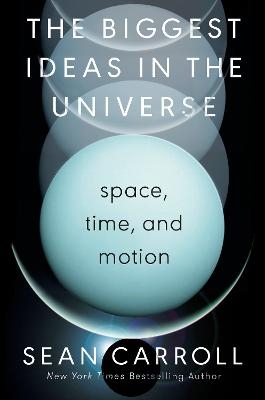
Geophysics and the Energy Transition
Elsevier - Health Sciences Division (Verlag)
978-0-323-95941-4 (ISBN)
- Titel z.Zt. nicht lieferbar
- Versandkostenfrei
- Auch auf Rechnung
- Artikel merken
Geophysics and the Energy Transition is written by experts in the field who have practiced the science and engineering associated with the subsurface for years. CCS is an integral component of the new energy transition but the application of Geophysics in the future will extend well beyond CCS if we are going to transition successfully to a carbon neutral environment. Science, engineering, and technology applications are important for site selection, characterization and monitoring to assure safe storage in the subsurface and energy sustainability in the future.
Malcolm was the Director of the Office of Energy and Environment at the University of Regina from 2000 - 2010, prior to which he worked for Saskatchewan Energy and Mines for twenty years. He was instrumental in the creation of the IEAGHG Weyburn-Midale CO2 Monitoring and Storage Project, a world recognised CO2 storage research project, including editing the final report of phase one. In the fall of 2012, another PTRC project was responsible for an historic event, the drilling of the deepest well in Saskatchewan’s history: 3396 metres. Malcolm was a member of Working Group III of the Intergovernmental Panel on Climate Change (IPCC), the scientific team awarded the 2007 Nobel Peace Prize jointly with Al Gore, and for which Malcolm was a lead author on the IPCC Special Report on Carbon Dioxide Capture and Storage. He also founded the Prairie Adaptation Research Collaborative (PARC), serving as its first head. In 2009, Malcolm was awarded the University of Saskatchewan Alumni Award of Achievement for outstanding contributions to profession, community and the University of Saskatchewan. In the same year, Saskatchewan Business Magazine named him one of Saskatchewan's ten most influential men. In 2013 he was recognised as one of five influential people in the Province’s oil industry. He was the joint winner of the 2006 Natural Sciences and Engineering Research Council of Canada (NSERC) Synergy Award for his work with ITC. Malcolm has numerous publications to his credit, including co-editing the book Geophysics and Geosequestration (Cambridge University Press). Thomas L. Davis, PhD, is a University Professor Emeritus at the Colorado School of Mines and founded the Reservoir Characterization Project (RCP), an industry funded consortium now in its 35th year. RCP received the Distinguished Achievement Award from the Society of Exploration Geophysicists (SEG) in 2014. He is active member in SEG as an organizer for technical conferences, workshops and continuing education programs and has served as SEG’s Second Vice President, Technical Program Chairman, and Distinguished Lecturer. He received the C.J. Mackenzie Award from the Engineering College of the University of Saskatchewan, the Milton B. Dobrin Award from the University of Houston, and the Dean’s Excellence and Melvin F. Coolbaugh Memorial Awards from the Colorado School of Mines. Martin Landro is a professor at the Norwegian University of Science and Technology (NTNU). He has worked as a research geophysicist and manager in petroleum research (IKU Petroleum Research) and also within Statoil’s (now Equinor) research centre in Trondheim, Norway. Some of his prestigious awards include the Norman Falcon award, the Louis Cagniard award, and the Conrad Schlumberger award from the European Association of Geoscientists and Engineers. He has also received the Norwegian Geophysical Award, Statoil’s Research Prize, the SINTEF award for outstanding pedagogical activity, the ENI Award (New Frontiers in Hydrocarbons) and the IOR Award from the Norwegian Petroleum Directorate. His research interests include seismic inversion, marine seismic acquisition and 4D/4C seismic surveys.
Section 1 - The energy transition
1. Introduction to the energy transition
2. Economic enablement of carbon capture and sequestration for the low carbon energy transition
3. A survey of carbon capture and sequestration (or storage) cost and storage
4. Energy transition: a reservoir engineering perspective
5. Preventing CO2 from fossil fuels from reaching the atmosphere
6. Critical reservoir parameters for safe, secure, and long-term storage: lessons of the past for selection of permanent geological storage sites
Section 2 - Integration of disciplines and technologies to ensure effective CCS
7. The need for integrated reservoir characterization in carbon capture and storage
8. CO2 messes with rock physics
9. The geochemistry of carbon capture and storage with implications for hydromechanical feedbacks and geophysical monitoring
10. The geomechanics of carbon storage
Section 3 - The role of geophysics in developing successful CCS projects
11. Geophysical technologies for CO2 monitoring
12. Advances in coupled passive and active seismic monitoring for large-scale geologic carbon storage projects
13. New tools for quantitative data interpretation
Section 4 - New site studies using advanced geophysical technologies
14. Multiwell DAS VSP monitoring of a small-scale CO2 injection: experience from the Stage 3 Otway Project
15. Next generation geophysical sensing: exploring a new wave of geophysical technologies for the energy transition
16. The Aquistore deep saline carbon dioxide storage project: learnings in three key areas for planned deep saline storage projects
17. New carbon capture and storage projects in the Williston Basin
Section 5 - Moving forward
18. The challenges of energy transition and opportunities for geophysicists
19. Opportunities for open-source software and open science in carbon capture and storage
20. Advanced geophysics used in CO2 storage
| Erscheinungsdatum | 29.10.2024 |
|---|---|
| Verlagsort | Philadelphia |
| Sprache | englisch |
| Maße | 191 x 235 mm |
| Gewicht | 450 g |
| Themenwelt | Naturwissenschaften ► Geowissenschaften ► Geophysik |
| ISBN-10 | 0-323-95941-5 / 0323959415 |
| ISBN-13 | 978-0-323-95941-4 / 9780323959414 |
| Zustand | Neuware |
| Informationen gemäß Produktsicherheitsverordnung (GPSR) | |
| Haben Sie eine Frage zum Produkt? |
aus dem Bereich


